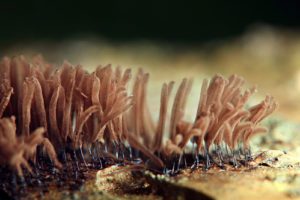Mold 101: What Is a Mycotoxin from Mold?

Close-up of Mold Mycellium
Much of the risk associated with indoor infestations of mold and fungus is due to substances called mycotoxins. You probably recognize that the root word “toxin” refers to poison, but what else do you need to know about these potentially harmful substances?
How Mycotoxins are Ingested
Mycotoxins are invisible to the naked eye. They can be as small as 0.1 microns, making them even more microscopic than mold spores, which range from one to 20 microns. Their minute size and airborne nature make it impossible to create an effective barrier.
Most mycotoxins enter through the respiratory system, where they can cause problems ranging from sneezing and coughing to asthma attacks. Others pass through skin or the membranes of the eyes, while toxic mold on crops can result in people or animals ingesting mycotoxins via food.
Treating Mycotoxins
You may hear talk about killing mycotoxins, but they are not living organisms, so the process really involves breaking down mycotoxins and neutralizing their toxicity.
• Bleach that includes five percent sodium hypochlorite kills some of the more common mycotoxins, including trichothecene and aflatoxin.
• The intense heat of fire can destroy mycotoxins. At 500°F, detoxification takes 30 minutes.
• Ozone is effective against most mycotoxins, but it requires a level that is unsafe for humans.
Mycotoxins will eventually break down on their own, but it can take several years for some varieties.
Traditional mold remediation can disperse spores and mycotoxins into the air, allowing them to settle and take hold in other areas. Our MoldExterm process removes mold and fungus quickly and efficiently while preventing future outbreaks. Contact Stern Mold today for a free mold inspection.
